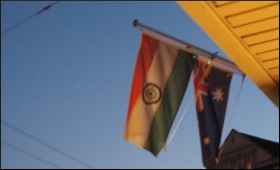|

|
What impedes Australia, India ties?
|
|

|
|
| Top Stories |
 |
|
|
|
Rekha Bhattcharjee | 11 Dec, 2012
While there has been a flurry of visits to India by high-powered Australian trade delegations and politicians, observers are baffled by the slow pace at which the bilateral ties are growing.
Australian analysts blame India's political culture for not only the stunted Australian-Indian ties but also for the slowing economic growth of the South Asian country.
"Australia's trading links with India will not increase substantially and sustainably until India recognises the importance to economic growth and development of big business," Len Perry, associate professor Economics at University of Technology Sydney (UTS) wrote recently in his blog.
The Sydney academic has blamed Nehruvian policies for India converting into a massive under-achiever and also for ingrained "distrust" of private businesses.
"The economic policies pursued by India's long-serving first prime minister, Jawaharlal Nehru, whose leadership from 1947 until his death in 1964, was marked by central planning and government ownership of major industrial organizations," Len Perry wrote.
"Such was the impact of this policy that businesses were pressured to remain small so as to avoid being answerable to a powerful bureaucracy renowned for its lethargy, incompetence and corruption," he adds.
It would be correct to say that not all of the political commentators share skeptics' pessimism about India-Australia ties.
"Australia and India are poised at an historic moment in their relationship," Rory Medcalf and C. Raja Mohan said in The 2012 Australia-India Roundtable: Co-Chairs' Statement released recently by Australia's respected think tank Lowy Institute.
"Building on recent positive steps, the links between the two democracies now need sustained creative thinking and efforts on the part of government, business and society to strengthen them further," the statement read.
"This will ensure the relationship attains the vast potential offered by the two nations' exceptional economic and societal complementarities and their convergent strategic interests in the Indo-Pacific region during this Asian Century," the co-chairs further stated.
Australian political leaders from both sides of the spectrum have been proactive to realise the optimal potential but for some irritants which refuse to go away.
Australia's ban on uranium exports to India was one such hurdle impeding the relations.
When Australian Prime Minister Julia Gillard gave her nod to uranium exports to India in spite of all the opposition - even from within the Labor party ranks - late last year, it was expected that the bilateral trade and political ties would witness an exponential growth.
"We have changed our party policy so that there is now no fetter for us on selling uranium to India," Gillard said on her maiden visit to India as prime minister in October.
Inarguably, there has been an increase in the bilateral trade and societal links but it is the slow pace which worries the Australian policy architects who are wagering on India to cushion any adverse impact from the slowing Chinese economy.
Gillard did reasonably well to harness the synergies of India and Australia bonds when she gave a prominent place to India in the recently-released White Paper on Australia's place in the Asian Century.
"In a century of growth and change, our interests are closer than they have ever been. We share a region of the world and we share an ocean," Gillard said in her keynote speech on the India visit.
In conclusion, there is an unmistaken optimism in Canberra and other political corridors down under that the only way relations with India can go is northwards.
"I think the exciting thing about it is that our interests are converging and when your interests converge, you have more room to work with. So we have certainly not reached the end of what we can achieve, far from it. I think our best days are ahead," Australian High Commissioner to India Peter Varghese, who has been appointed his country's foreign secretary, said last month.
* Rekha Bhattacharjee is a Sydney-based journalist and commentator. She can be contacted at vijay@hotkey.net.au
* The views expressed by the author in this article are his/ her own and do not necessarily reflect the views of SME Times.
|
|
|
| |
|
|
|
|
|
|
|
|
|
|
|
|
|
|
| |
| Customs Exchange Rates |
| Currency |
Import |
Export |
US Dollar
|
84.35
|
82.60 |
UK Pound
|
106.35
|
102.90 |
Euro
|
92.50
|
89.35 |
| Japanese
Yen |
55.05 |
53.40 |
| As on 12 Oct, 2024 |
|
|
|
|
|
|
|
| Commented Stories |
 |
|
|
|
|
|
| |
|